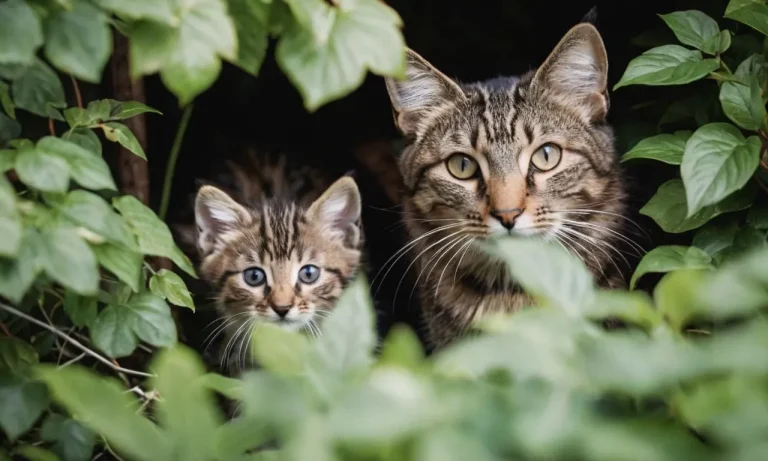With their scaly skin and lizard-like appearance, it’s only natural to wonder if bearded dragons have a link to those prehistoric beasts that once roamed our planet. If you’re pressed for time, the quick answer is: while bearded dragons and dinosaurs share some common ancestors, bearded dragons did not descend directly from dinosaurs.
In this nearly 3000 word article, we’ll take an in-depth look at the evolutionary history of bearded dragons to uncover their connection to dinosaurs. We’ll explore topics like:
– The defining features of dinosaurs vs. other reptiles
– How scientists classify different species and their evolutionary relationships
– What fossil evidence tells us about bearded dragon ancestors
– How bearded dragons and dinosaurs compare anatomically
By the end, you’ll have a clear understanding of where bearded dragons fall on the reptilian family tree – and why they can’t quite be considered true dinosaurs despite some similarities.
Defining Dinosaurs as a Group
When Did Dinosaurs Live?
Dinosaurs first appeared during the Triassic period, between 245 and 230 million years ago. They became the dominant terrestrial vertebrates in the Jurassic period, about 200 million years ago, and remained so until the Cretaceous–Paleogene extinction event about 66 million years ago, when three-quarters of all dinosaur genera went extinct.
Distinctive Dinosaur Features
Dinosaurs possessed specialized features that distinguished them from other reptiles, including:
- Erect limbs – Dinosaurs stood upright, unlike other reptiles that sprawled out.
- Three or more sacral vertebrae – They had more vertebrae connecting the spine to the pelvis providing support for their upright stance.
- Open hip socket – Allowed for more leg movement and improved locomotion.
These adaptations allowed dinosaurs to grow much larger than other terrestrial animals at the time. The largest known dinosaur specimen was the titanosaur Patagotitan mayorum, estimated to weigh over 60 tons!
Dinosaur Taxonomy and Classification
Dinosaurs are classified into two orders under the clade Dinosauria:
- Saurischia – “Lizard-hipped” dinosaurs with pubis bone pointed forward.
- Ornithischia – “Bird-hipped” dinosaurs with pubis bone pointed backward.
Saurischians include theropods (bipedal predators like Tyrannosaurus) and sauropodomorphs (giant long-necked herbivores). Ornithischians include armored dinosaurs (thyreophorans) and bird-hipped plant eaters (ornithopods).
At their peak, paleontologists estimate dinosaurs comprised over 5,000 species living on all seven continents. Their reign ended with a mass extinction that killed off all dinosaurs except modern birds, which are classified as avian dinosaurs.
The Evolution and Classification of Bearded Dragons
Identifying Bearded Dragon Ancestors
Researchers believe that the earliest ancestors of today’s Pogona genus of bearded dragons first emerged around 110-120 million years ago during the mid-Cretaceous period. Based on fossil evidence, these primitive lizards likely bore physical resemblance to the Pogona we know today, possessing key features like spiky scales protruding from the throat and sides of the head.
Over millions of years of adaptation and natural selection, this ancestral branch gradually evolved into over eight Pogona species found across Australia. The central bearded dragon (Pogona vitticeps) and Lawson’s dragon (Pogona henrylawsoni) emerged as two of the larger-bodied descendents of these primitive Pogonas.
Comparing Bearded Dragon and Dinosaur Skeletons
Despite some outward physical similarities, important differences exist between dinosaur and Pogona skeletal structures. Most noticeably, dinosaurs possessed much thicker leg bones and large cavities in their vertebrae which housed massive air sacs to support their enormous bulk.
In contrast, Pogonas have lightweight, hollow bones in their limbs which aid in climbing trees and traversing uneven Australian shrubland.
| Skeletal Trait | Dinosaur | Bearded Dragon |
| Limb Bone Thickness | Very Thick | Hollow and Lightweight |
| Vertebrae Structure | Large Air Cavities | Solid Bone |
While bearing superficial resemblance to some dinosaur species in features like spiked frills and thick-scaled skin, Pogonas lack the specialized anatomical structures needed to grow into multi-ton behemoths like the long-extinct dinosaurs.
Where Bearded Dragons Sit Within the Reptile Family Tree
As members of the Agamidae family, bearded dragons belong to a branch of tree-dwelling, old world lizards indigenous mainly to warm environments across Africa, Asia, and Australia. Herpetologists believe the Agamidae ancestors of bearded dragons diverged from a common lizard ancestor approximately 150 million years ago around the late Jurassic period.
Compared to other Agamidae like the thorny devil and flying lizard, bearded dragons boast thicker armored skin, a spiky throat frill, powerful jaws, and the ability to run on their hind legs – all adaptations to the harsh desert climate of Australia’s interior where they primarily reside.
Key Differences Between Dinosaurs and Bearded Dragons
Variation in Physical Features
Dinosaurs and bearded dragons may seem similar at first glance, but they have some major physical differences. Dinosaurs were much larger, with some species like the Argentinosaurus growing over 100 feet long and weighing up to 90 tons!
In contrast, bearded dragons are relatively tiny reptiles, only growing to about 2 feet long at most. Dinosaurs also walked on four legs, while bearded dragons have four legs but tend to be more quadrupedal.
Additionally, bearded dragons have prominent scales and spikes around their head that can be extended to appear larger and more intimidating, whereas dinosaur physical features varied greatly between species.
Different Time Periods
Perhaps the biggest difference between dinosaurs and bearded dragons is when they lived. Dinosaurs first appeared during the Triassic period over 200 million years ago and ruled the Earth until their mass extinction at the end of the Cretaceous period about 66 million years ago.
On the other hand, bearded dragons are a much more recent reptile, having emerged in Australia about 6 million years ago. So while dinosaurs had a tenure of over 150 million years, bearded dragons have been around for only a tiny fraction of that time.
Separate Evolutionary Branches
Despite some physical resemblances, dinosaurs and bearded dragons evolved from completely separate lineages. Dinosaurs belong to the archosaur group, which also includes modern crocodiles and birds. Bearded dragons are part of the agamid family, which are lizards found mainly in warm habitats like deserts.
Dinosaurs share common ancestors like the early archosaur Proterosuchus which lived about 252 million years ago. However, bearded dragons trace their origins back to much more recent primitive lizards that adapted to the harsh Australian outback.
So while bearded dragons may vaguely look like tiny versions of dinosaurs, their evolution diverged on completely different paths long ago.
Shared Traits and Commonalities
Some Overlapping Physical Attributes
While bearded dragons and dinosaurs lived during vastly different eras, they do share some physical characteristics. Both have elongated bodies, four legs, tails, scales, and other reptilian features. Bearded dragons and many dinosaurs were quadrupedal, walking on all fours.
Some key skeletal similarities include their vertebrae, limb bones, ribs, and skull shape.
There are also some behavioral parallels. Dinosaurs are believed to have been solitary creatures who came together mainly to mate. Bearded dragons are the same way, preferring to be housed alone except when breeding.
Both dinosaurs and bearded dragons lay eggs, guard their nests, and care for the hatchlings. These kinds of nurturing behaviors link the two species.
Similarities as Reptiles
As reptiles, bearded dragons and dinosaurs share common traits like being cold-blooded, having dry scaly skin, and laying soft-shelled eggs on land. They have good vision, a protective bony framework, and jaws lined with teeth.
Both animals evolved complex reproductive systems to maximize survival of their young.
There are also key differences, since dinosaurs lived over 65 million years ago. Bearded dragons are smaller, have different habitat needs, and occupy a distinct environmental niche than giant dinosaurs. But shared qualities as land-dwelling reptiles connect the two species.
Common Ancient Ancestors
Bearded dragons and dinosaurs both descend from a distant relative called the archosaur. Around 250 million years ago in the Triassic period, the archosaur split into two lineages. One led to crocodilians and dinosaurs. The other led to pterosaurs like the pterodactyl, and much later, bearded dragons.
Archosaurs evolved key physical and behavioral traits like laying eggs on land rather than water like amphibians. They had improved walking legs, sharper eyesight, more upright posture, and increased mobility compared to earlier reptiles.
These foundational archosaur adaptations eventually enabled dinosaurs and dragons to flourish. Their shared ancient ancestry links the two species.
Conclusion
While bearded dragons and dinosaurs share some common reptilian features and ancient ancestry, the evidence shows they followed distinct evolutionary paths. Bearded dragons belong to the suborder Iguania within the order Squamata, while dinosaurs fall under a separate branch of archosaurs.
They lived tens of millions of years apart and developed marked variations in things like their skeletal structure, teeth, claws, and more.
So in summary – no, bearded dragons are not dinosaurs themselves. But we can still be fascinated by both these captivating creatures and enjoy uncovering their unique histories that shaped the reptile family tree.







